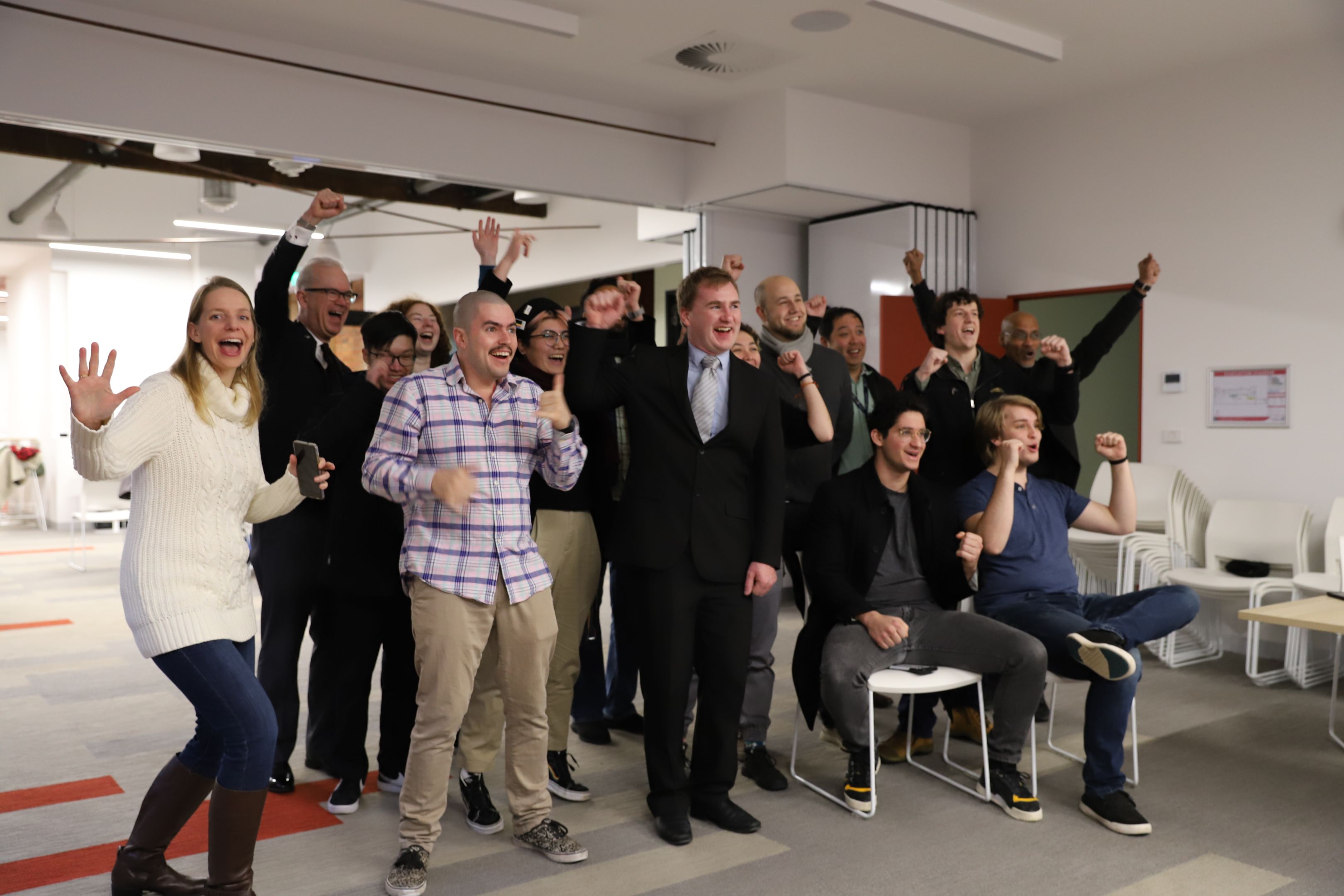Rocket launch alert! A uni club that lets you send tech to space

Postdoctoral researcher, Dr Samuel Pinches and mechatronics student, Rohan Ford, with the SMACCSAT1, the first satellite payload card created by the student-led Swinburne's Makers and Creators Club.
In summary
- SMACCSAT1, the first satellite payload card created by the student-led Swinburne's Makers and Creators Club (SMACC), was launched on the SpaceX Transporter mission in the US
- Weighing only 80g, the device is designed to capture awe-inspiring images of Earth, perform gravitational measurements, and to carry out optical sky-to-ground communication trials
- The project is a milestone for students in Australia's burgeoning space industry and is made possible through industry collaboration with Australian space services company Skykraft
Students from Swinburne University of Technology are celebrating as a tiny piece of technology with big potential was successfully launched today into the Earth’s orbit.
SMACCSAT1, the first satellite payload card created by the student-led Swinburne's Makers and Creators Club (SMACC), was launched on the SpaceX Transporter mission in the US at 07:25 AEST on 13 June 2023, with students watching on live via video-link.
The project has been made possible through industry collaboration with Australian space services company Skykraft and represents a meaningful moment for students in Australia's burgeoning space industry.

Staff and students from Swinburne's Makers and Creators Club watched on as their creation, a satellite payload card, was launched on the SpaceX Transporter mission in the US.
Dr Samuel Pinches, a postdoctoral researcher who supported the students during the project, shared his excitement about the launch.
“Sending things to space is not only an incredible privilege, but this project has been a truly unique opportunity for Swinburne students to gain real experience in the process of designing space-grade hardware. For Australia’s space industry to flourish, we really need talented people with these critical skills”, he said.
“It’s been phenomenal to see the students go from drawing-board to launch-pad over the past 12 months, including stopping by Skykraft’s HQ in Canberra to use their clean room facilities.”
“It just shows the breadth of opportunities that are possible within Swinburne's culture of student engagement and industrial collaboration."
Tiny technology, big potential
SMACCSAT1, the brainchild of SMACC, is a payload card – a small square circuit board – weighing a mere 80g. Onboard this tiny slice of technology is a low power computer, a cellphone camera, as well as a range of sensors. The students designed this device to capture awe-inspiring images of Earth, perform gravitational measurements, and to carry out optical sky-to-ground communication trials.
Rohan Ford, a Bachelor of Mechatronics student, who spearheaded the hardware and electronics development, has been eagerly awaiting the moment of launch for this student-led project.
“This project has certainly been very challenging, but we also learned quite a lot along the way. Our team was beyond excited during the launch. Looking up at the sky and knowing that something you made is flying overhead in space, is pretty hard to beat!”, he said.

The project has been made possible through industry collaboration with Australian space services company Skykraft.
Skykraft, an Australian space services company, provided a position on their Block III satellites for the Swinburne club, offering students hands-on experience in space hardware development. Skykraft’s satellite constellation aims to revolutionise global air traffic control by providing global coverage of aircraft, even over oceans and remote areas.
"This project is a shining example of the flexibility and inclusivity inherent in the Undergraduate Research Partnership Scheme initiated by Swinburne's School of Science, Computing and Engineering Technologies (SoSCET). It's all about creating meaningful connections between students and staff, and bringing a fresh, professional perspective to our degree programs,” said SoSCET Dean, Professor Alex Stojcevski.
Students and experts are available for comment. Photos from the launch are also available.
-
Media Enquiries
Related articles
-

- Student News
- Film and television
Swinburne students curate "Wrestling with Reality" film season for ACMI's Cinema 3
Students from Swinburne's Cinema and Screen Studies program launch curated film season on ACMI’s streaming platform, Cinema 3.Tuesday 23 July 2024 -

- University
Meet the Swinburne students and alumni at the Paris Olympics and Paralympics
Swinburne students and alumni are making their mark at the 2024 Olympic and Paralympic Games in Paris. Meet the six Swinburne athletes who are taking on the world.
Wednesday 17 July 2024 -

- Student News
Vygo: Support at students’ fingertips
Swinburne University of Technology students will have personalised support and peer-to-peer learning at their fingertips with the new Vygo app.
Thursday 25 July 2024 -

- Astronomy
High school students work with Swinburne astronomers on the future of space
Swinburne’s Youth Space Innovation Challenge has inspired over 330 Australian teenagers to pursue a career in STEM.
Friday 26 July 2024 -

- Student News
- University
Students decorate next gen_campus with innovation, technology and collaboration
The Decorate your next gen_campus design competition celebrates Swinburne’s next gen_campus transformation with student art depicting the themes collaboration, innovation and technology
Tuesday 18 June 2024

